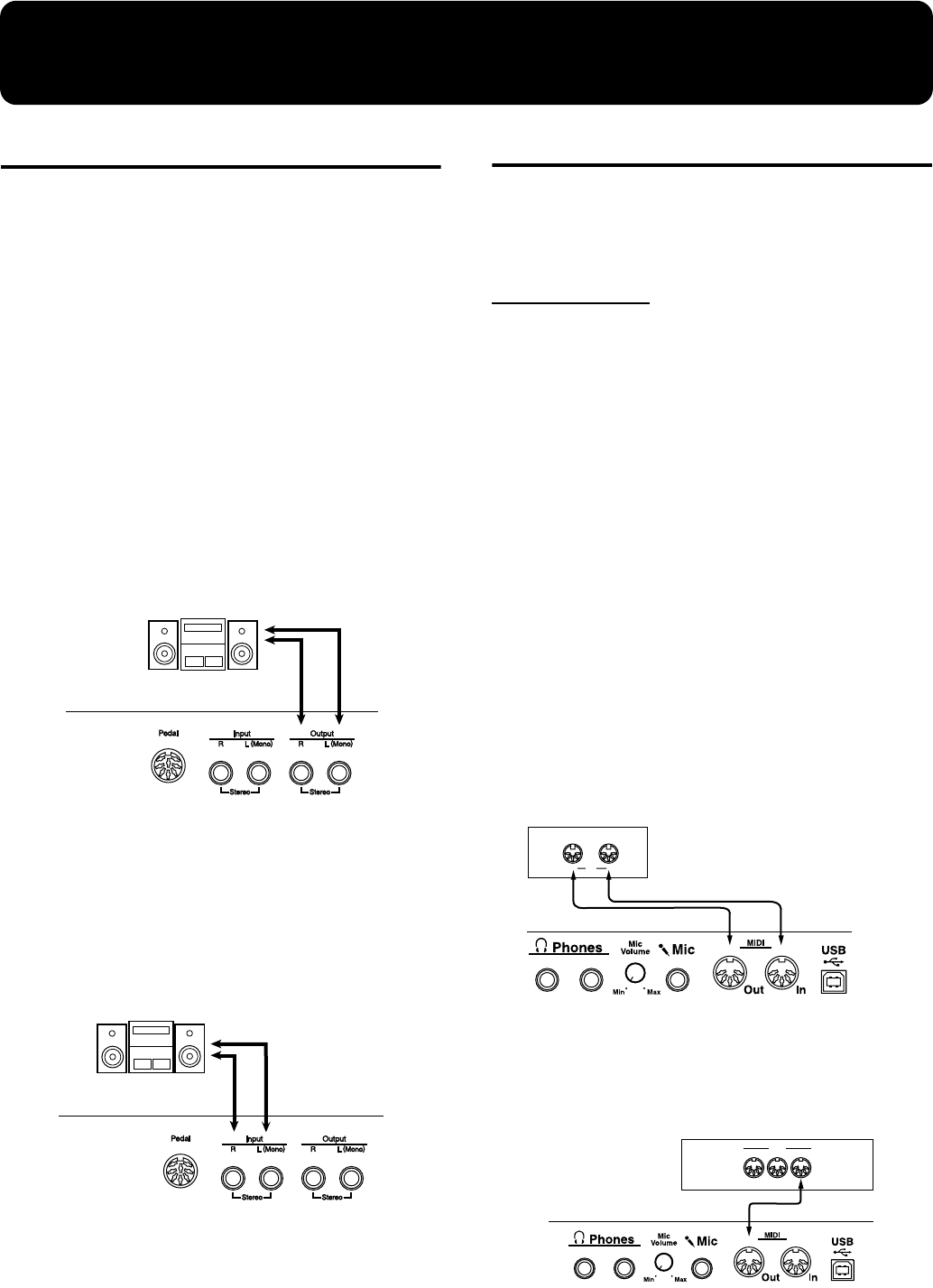
61
Connecting External Devices
Connecting Audio Devices
You can connect audio devices to play the sound of the HPi-7
through the speakers of your audio system, or to record your
performance on a tape recorder or other recording device.
Use phone plug audio cables (sold separately) to make connections.
926a
* When connection cables with resistors are used, the volume
level of equipment connected to the input jacks may be low. If
this happens, use connection cables that do not contain
resistors, such as those from the Roland PCS series.
Example connections
921
* To prevent malfunction and/or damage to speakers or other
devices, always turn down the volume, and turn off the power on
all devices before making any connections.
Playing the sound of the HPi-7 through the
speakers of an audio system/Recording the
performance of the HPi-7 on a recording device
fig.audio1e
Use the following procedure when turning on the power.
1
Turn on the power of the HPi-7.
2
Turn on the power of the connected device.
3
Adjust the volume of each device.
Playing the sound of an audio device through the
speakers of the HPi-7
fig.audio2e
Use the following procedure when turning on the power.
1
Turn on the power of the connected device.
2
Turn on the power of the HPi-7.
3
Adjust the volume of each device.
Connections with MIDI Devices
By connecting external MIDI devices and exchanging performance
data, a device can control the performance of another device. For
example, you can play sounds from another device, or select sounds
remotely.
What is MIDI?
“MIDI” stands for “Musical Instrument Digital Interface,” and is a
universal standard created to allow for the exchange of performance
data among electronic musical instruments and computers.
The HPi-7 provides MIDI connectors, which allow performance data
to be exchanged with an external device. When these connectors are
used to connect the HPi-7 to external devices, an even wider range of
possibilities becomes available.
984
* A separate publication titled “MIDI Implementation” is also
available. It provides complete details concerning the way MIDI
has been implemented on this unit. If you should require this
publication (such as when you intend to carry out byte-level
programming), please contact the nearest Roland Service
Center or authorized Roland distributor.
Example connections
921
* To prevent malfunction and/or damage to speakers or other
devices, always turn down the volume, and turn off the power on
all devices before making any connections.
Playing the HPi-7 from a MIDI sequencer/Recording
an HPi-7 performance on a MIDI sequencer
fig.midi1e
* If you are connecting a MIDI sequencer, set “Local Off.” For
details refer to “Local Control setting” (p. 62).
Perform on the HPi-7 to play a MIDI sound
generator
fig.midi2e
→
For details on MIDI settings, refer to “Making MIDI-Related
Settings” (p. 62).
HPi-7
Input R/L
(Line In, Aux In)
HPi-7
Output R/L
(Line Out, Aux Out)
HPi-7
InOut
MIDI
MT Series
* MT-90s/80s has no MIDI Out connector.
OUTTHRU IN
MIDI
HPi-7
Sound Module
HPi-7_e.book 61 ページ 2005年1月18日 火曜日 午後4時39分


















